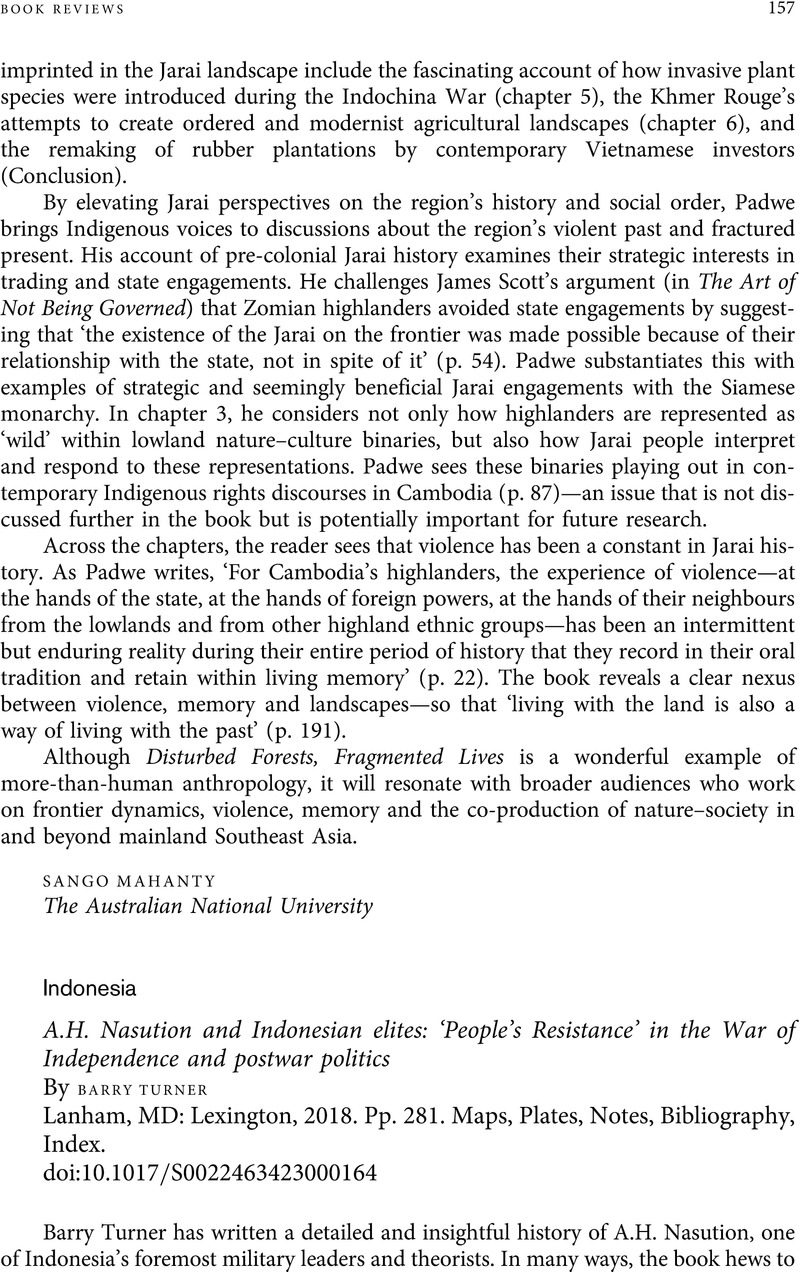No CrossRef data available.
Article contents
Indonesia. A.H. Nasution and Indonesian elites: ‘People's Resistance’ in the War of Independence and postwar politics By Barry Turner Lanham, MD: Lexington, 2018. Pp. 281. Maps, Plates, Notes, Bibliography, Index.
Review products
Indonesia. A.H. Nasution and Indonesian elites: ‘People's Resistance’ in the War of Independence and postwar politics By Barry Turner Lanham, MD: Lexington, 2018. Pp. 281. Maps, Plates, Notes, Bibliography, Index.
Published online by Cambridge University Press: 03 April 2023
Abstract
An abstract is not available for this content so a preview has been provided. Please use the Get access link above for information on how to access this content.

Information
- Type
- Book Review
- Information
- Copyright
- Copyright © The National University of Singapore, 2023


